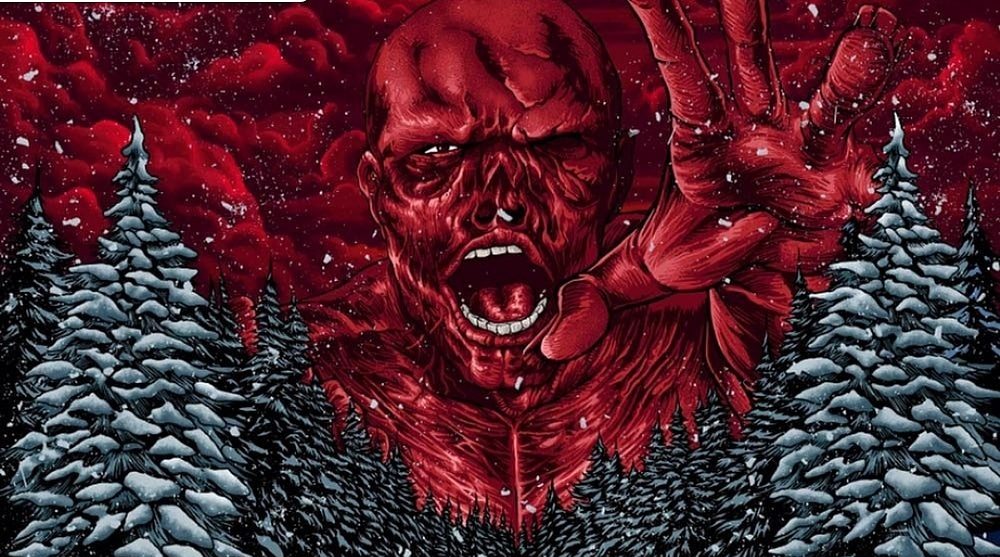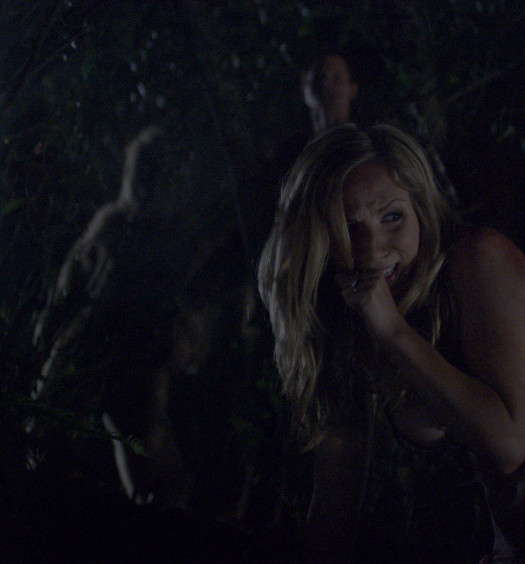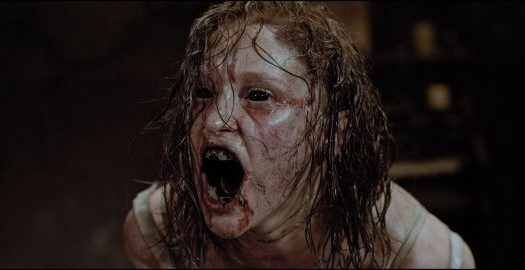1. What inspired the concept/narrative of Winterskin?
I love horror films set in the snow, and after having so many characters in my previous two films, so many subplots, I wanted to make something that focused on two characters in one location. Somebody trapped in a log cabin really appealed to me, its a cosy christmas-card location, and at the same time has the potential for intense horror and isolation. The true-life unsolved mystery of the Hinterkaifeck Murders began to influence my ideas, along with Stephen King novels, Gerald’s Game and Misery, and also some films, westerns like The Great Silence and The Hateful Eight, and horrors like Black Christmas.
2. What made this film easier than your previous work?
Making this was incredibly difficult! I’ve never been so cold and exhausted as I was in this wooden cabin set. You can see the actor’s breath on screen, due to how genuinely freezing it was. It was mostly nightshoots, always freezing, and on paper I thought 2 characters in one location for most of the film was going to be simple and easy… but the reality of being stuck in basically one room with the same people for 26 days is quite different! We battled through it, we worked our asses off through horrid conditions, and I didn’t stop shooting until I had everything exactly as I wanted, which was equally torturous for everyone involved, especially those being repeatedly showered in fake blood.
3. Would you consider this your “cabin in the woods” film?
It is essentially a cabin in the woods film, I never saw it as that though. I see this as my single location thriller film. Two characters is tough work, as a writer, keeping the action confined to one cabin is tough. I did everything I could to make this film feel bigger than that, I crammed a lot of action into that cabin! I adore single-location horror stories, so I would do it again, but with more characters and a bigger location.
4. Were there any reservations you encountered during production?
We shot the exteriors in Lapland. I’d never been there and I’d certainly never shot there, so I really had no idea if we could pull off these scenes in the snow. I didn’t even know for sure there would be any snow, as the snowfall is unpredictable. It turned out to be great fun, we loved shooting there, we basically had endless snowy forests entirely to ourselves and it wasn’t even particularly cold. Another daunting element was the interior of the cabin, which is built entirely from scratch, with every prop and piece of furniture inside handpicked by me. That was extremely satisfying, because when I wrote the script I had an imaginary idea of the layout and design of the cabin. I drew the floorplan I wanted and that’s exactly how it was built for me.
5. What would be 2 great companion films you’d suggest watching beforehand? Or that inspired the project.
If you’re wanting to have a snow-horror movie marathon, I’d go with the 70s TV movie Snowbeast, matched with a classic, John Carpenter’s The Thing. This movie was pitched to my investors as a small scale Misery meets The Hateful Eight and that’s very accurate in terms of where my influences were.
6. What year is this work set in? In the past you’ve been able to really capture a vintage aesthetic; do you prefer working on Historical pieces versus more modern ones?
This film is set in the early 70s, but in a very remote part of America where the cabin has a lot of older features. I prefer my films to have a timeless look to them, or at least a 70s-inspired genre style. Its 70s horror movies I go back to for inspiration, they looked the best back then, and into the early-mid 80s of course. I’m really turned off my horror films with a very modern aesthetic, unless its essential to the story. We’re in an age now where picking the decade your movie is set in is not too different to choosing a specific style of music or cinematography. Filmmakers can now play with 100+ years of visual styles and techniques, so if you’re making horror films and they all look like they were shot yesterday, you’re not taking full advantage of the range of looks and styles that may enhance your story.
7. What’s one word you’d use to describe the kind of fear you captured in Winterskin?
Tense. If it works as intended, Winterskin is a waiting game, its tension and relief, as the film goes on. There’s mindgames, matched with outbreaks of violence to heighten the tension. I started the film with an action scene, so that viewers would be anticipating the threat of violence throughout the rest of the film, which there is plenty of, so hopefully that pays off.
The second part of this interview, covering Steed’s next film The Barge People, will be released in tandem with its trailer later this year. Lovecraft fans cross your tentacles!
Page 1 2































